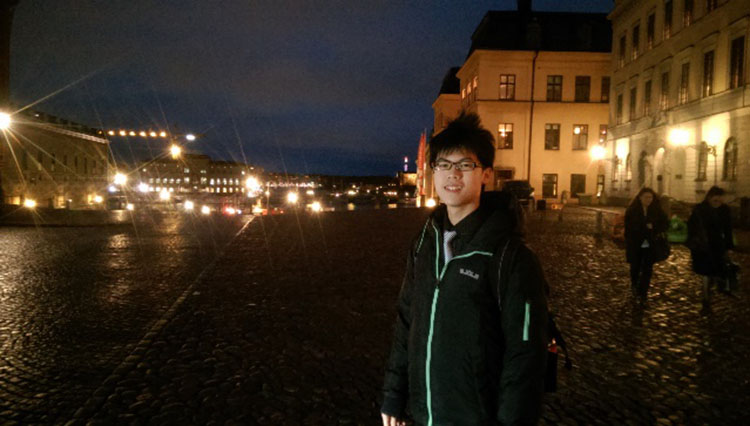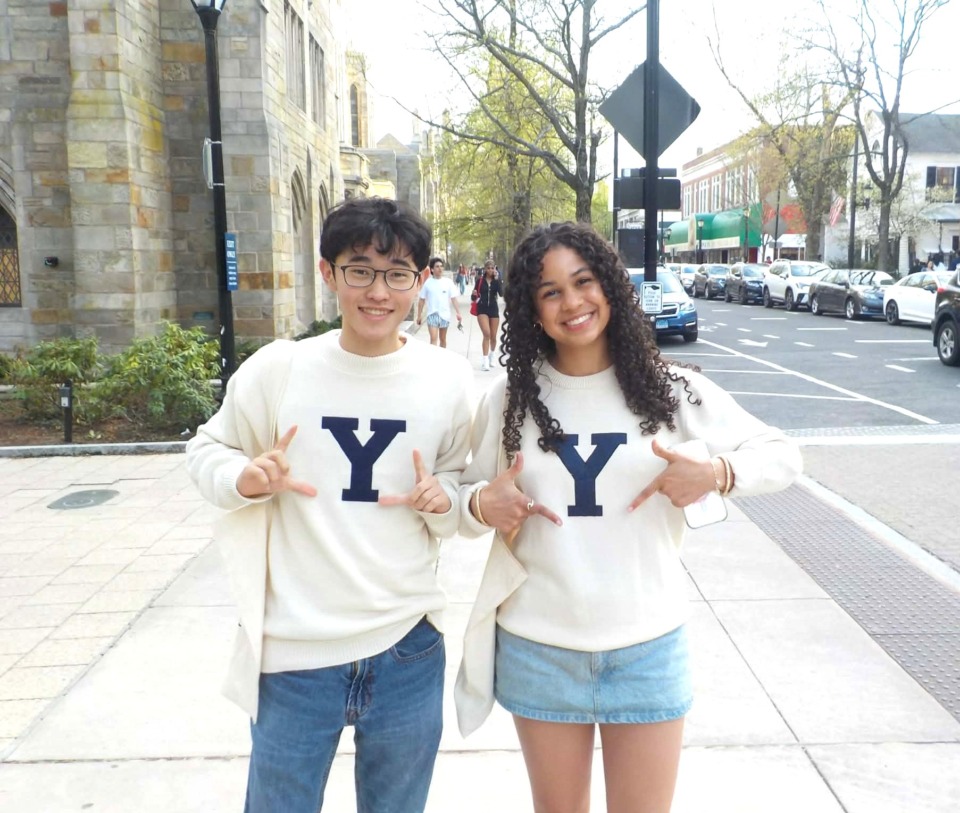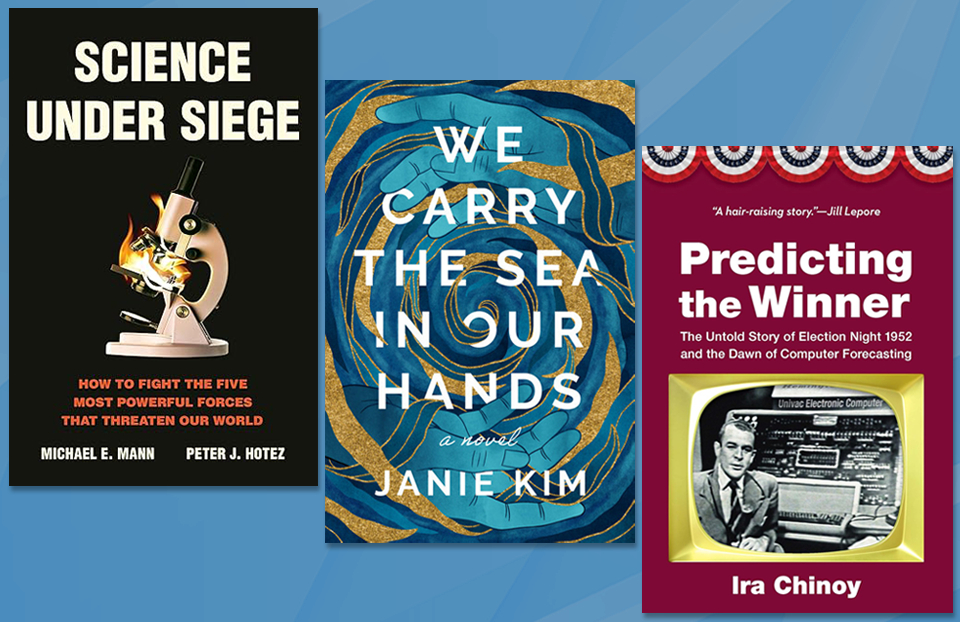Intel ISEF 2014 Finalists Won Trip to Stockholm International Youth Science Seminar

The Stockholm International Youth Science Seminar (SIYSS) brought students from all over the globe together for a week of Swedish hospitality and Nobel Laureate inspiration.
Yi-Hsuan Huang was one of three Intel ISEF 2014 finalists to receive a week-long, all-expense-paid trip to the seminar. His research delved into plant sciences, specifically looking into the function of a transcription factor called bZIP16 and how it plays a role in how plants perceive environmental signals to decide the best time to flower.
Huang shared his experience with us, explaining all the highlights of SIYSS, his first solo international trip.
The seminar began on December 4, with an evening of student introductions. The SIYSS participants shared their research with one another at a welcome party thrown by the seminar coordinators.
True to form, the welcome party wasn’t complete without a mini science project in the form of dessert- a demonstration of ice cream made by liquid nitrogen.
On the first morning, the students split into three groups to prepare for the ethics seminar. Huang’s group discussed the ethics of an individual country’s responsibility in a global crisis. Since the group consisted of participants from around the world, the opinions and viewpoints were vibrantly multi-dimensional.
The next day was a Stockholm touring day. “The city was kind of like Venice- you could see the sea almost everywhere,” Huang shared. Driving past Alfred Nobel’s house was a tour highlight for the participants.
The students arrived at the Karolinska Royal Institute of Technology, where the Secretary-General of the Nobel Prize committee, Göran K. Hansson, greeted them. He brought the students to sit and discuss the history of the Prize at the roundtable where Nobel Prize decisions are made by the Nobel committee.
Huang and his peers joined the Nobel Forum where they met three Nobel Laureates, Professors John O’Keefe, May-Britt Moser and Edvard I. Moser. “Their discoveries about place cells and grid cells were absolutely marvelous,” Huang said.
Several other Nobel Prize winners shared their stories with the seminar students during the Nobel lectures, including Eric Betzig, a Nobel Laureate in chemistry. “His hard work touched us very much. I learned that without sacrificing, we wouldn’t have the chance to succeed,” Huang said.
On December 9, the students presented their own research. “Although I was a bit nervous at the first, my passion wiped away my nerves, and I began explaining how I found a gene that can control plant flowering time,” Huang said. “After I went off the stage and returned to my poster stand, I was a bit shocked to see that lots of high school students were actually interested in my project.”
The trip culminated with an invite-only party and the Nobel Prize Award ceremony. Since no one carried badges or nametags, Huang and other participants entertained themselves with a game of “Spot the Laureates” at the reception.
The students were part of it all. After being surprised with four long limousines, they were dropped off at the ceremony in style.
“When we arrived at the Concert Hall, there were tons of people aiming their cameras around us, and we felt like superstars with all the flashes and crowds,” Huang said.
The Swedish royalty arrived and the students cheered along for every Laureate as they received a golden medal from the King. The ceremony and subsequent banquet was a well-deserved respite for the hardworking young scientists.
The trip only solidified Huang’s desire to contribute to society through his research. “I believe that all of us will keep on investigating the mysteries to know the truth in order to help people and make the world a better place,” he said.


